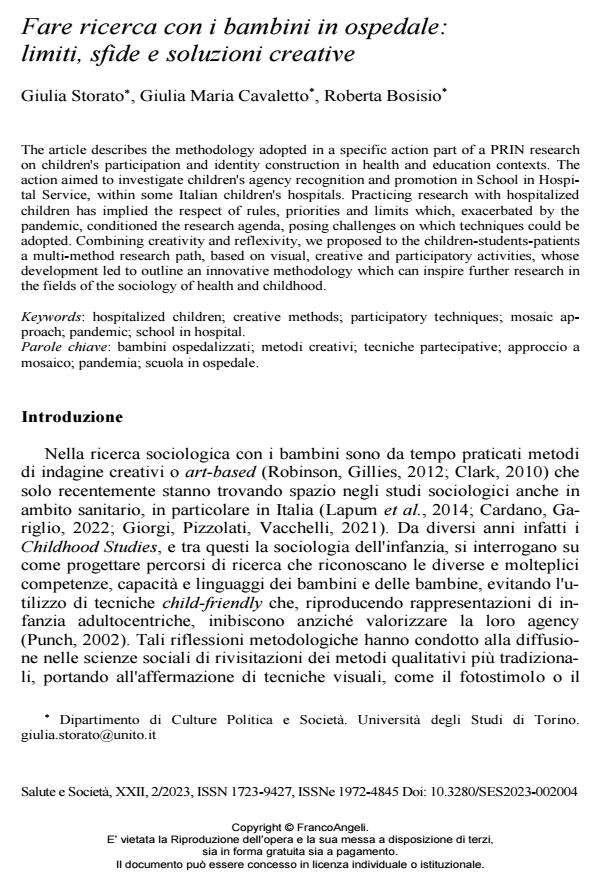Fare ricerca con i bambini in ospedale: limiti, sfide e soluzioni creative
Titolo Rivista SALUTE E SOCIETÀ
Autori/Curatori Giulia Storato, Giulia Maria Cavaletto, Roberta Bosisio
Anno di pubblicazione 2023 Fascicolo 2023/2
Lingua Italiano Numero pagine 11 P. 29-39 Dimensione file 390 KB
DOI 10.3280/SES2023-002004
Il DOI è il codice a barre della proprietà intellettuale: per saperne di più
clicca qui
Qui sotto puoi vedere in anteprima la prima pagina di questo articolo.
Se questo articolo ti interessa, lo puoi acquistare (e scaricare in formato pdf) seguendo le facili indicazioni per acquistare il download credit. Acquista Download Credits per scaricare questo Articolo in formato PDF

FrancoAngeli è membro della Publishers International Linking Association, Inc (PILA)associazione indipendente e non profit per facilitare (attraverso i servizi tecnologici implementati da CrossRef.org) l’accesso degli studiosi ai contenuti digitali nelle pubblicazioni professionali e scientifiche
The article describes the methodology adopted in a specific action part of a PRIN research on children's participation and identity construction in health and education contexts. The action aimed to investigate children's agency recognition and promotion in School in Hospi- tal Service, within some Italian children's hospitals. Practicing research with hospitalized children has implied the respect of rules, priorities and limits which, exacerbated by the pandemic, conditioned the research agenda, posing challenges on which techniques could be adopted. Combining creativity and reflexivity, we proposed to the children-students-patients a multi-method research path, based on visual, creative and participatory activities, whose development led to outline an innovative methodology which can inspire further research in the fields of the sociology of health and childhood.
Parole chiave:bambini ospedalizzati; metodi creativi; tecniche partecipative; approccio a mosaico; pandemia; scuola in ospedale.
Giulia Storato, Giulia Maria Cavaletto, Roberta Bosisio, Fare ricerca con i bambini in ospedale: limiti, sfide e soluzioni creative in "SALUTE E SOCIETÀ" 2/2023, pp 29-39, DOI: 10.3280/SES2023-002004